Covid-19: How does the latest virus data in NI look?
- Published

This week the Northern Ireland Executive extended Covid-19 restrictions by another four weeks, until 1 April.
And on Friday, Health Minister Robin Swann played down the prospects of any easing before Easter.
In the meantime, a pathway-to-recovery roadmap is being prepared by ministers for publication on 1 March - it will outline what statistical benchmarks need to be met in order for restrictions to be lifted.
"The roadmap will set a trajectory that won't be tied to dates and will be very clear about following the science," he said.
What does the latest data tell us this week?
Death rate lowest since mid-October
The Covid death rate in Northern Ireland has continued to fall.
The rolling seven-day average for deaths in Northern Ireland stands at six expected deaths per day.
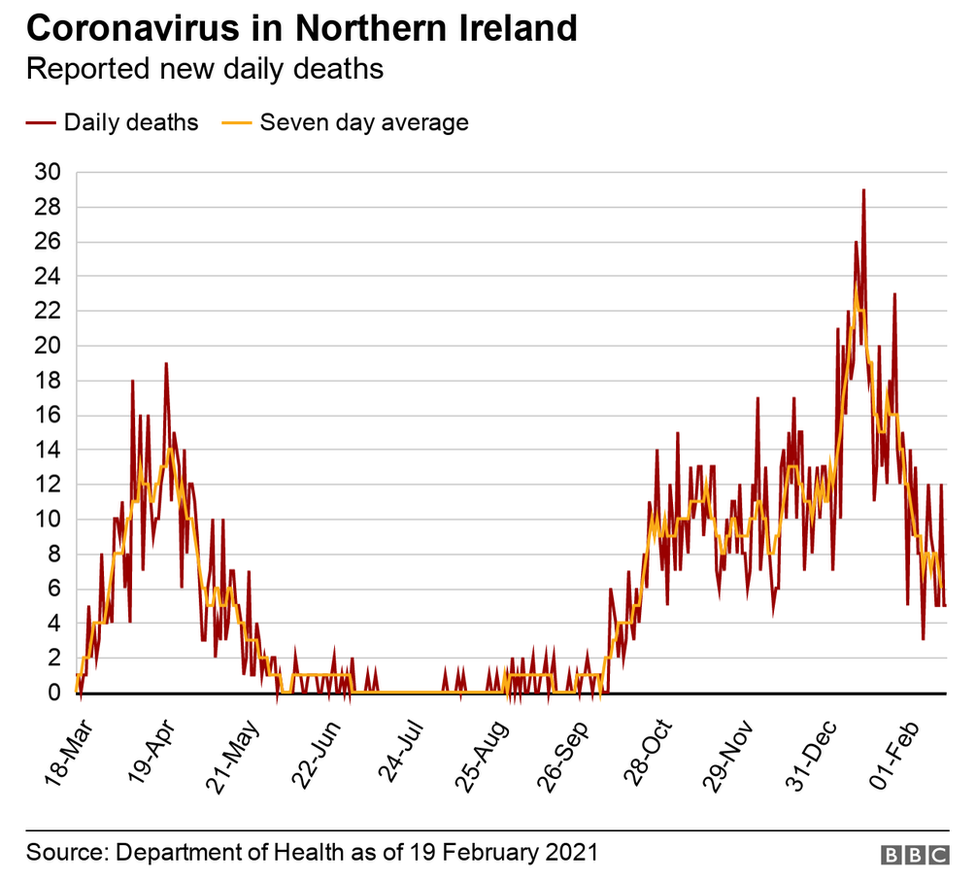
The last time it was this low was in mid-October last year.
It might rise slightly in the next few days to reflect a slight increase in deaths towards the end of this week.
However, the overall trend remains a downward one.
Daily cases still trending down
Infection rates in Northern Ireland have been falling for weeks.
According to data from the BBC Data Unit, for the week up until 6 February, only two council areas have a rate greater than 200 cases per 100,000 population - Mid Ulster (263 per 100,000 population) and Armagh City, Banbridge and Craigavon (250 per 100,000 population).
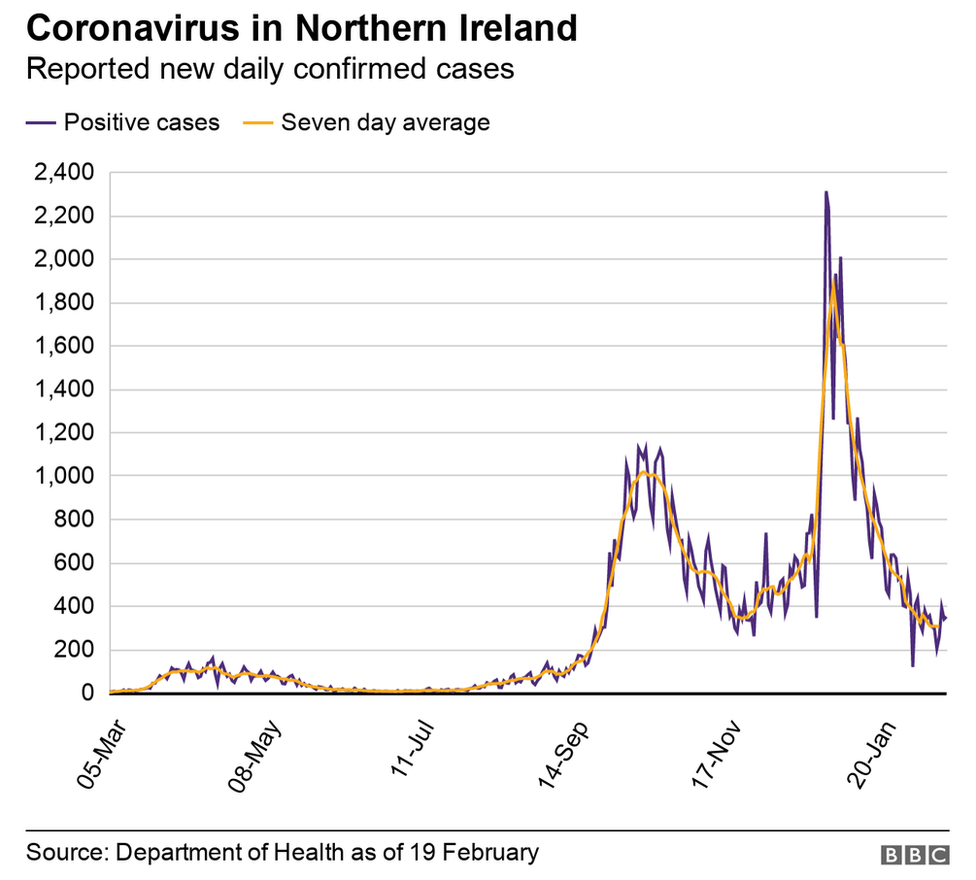
Derry and Strabane, Fermanagh and Omagh, and Lisburn City and Castlereagh councils all have rates less than 100 per 100,000 population.
Figures from the Department of Health indicate that over the past week, about 1 in every 16 people tested for the virus get a positive result.
The rate for the previous week was about 1 in every 11 people.
Hospital admissions
Hospital admissions and the number of Covid patients in Northern Ireland's hospitals have been falling steadily since mid-January.
Over the past week, an average of about 20 people a day have been admitted.
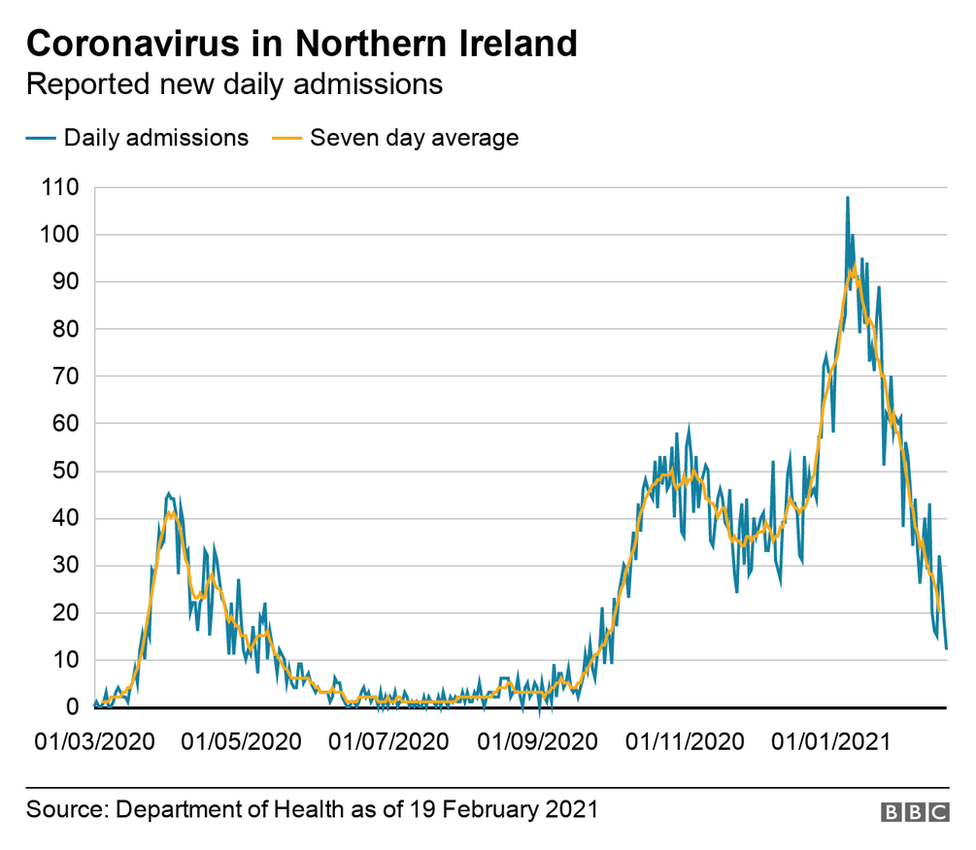
There are now just over 400 inpatients with Covid.
That's coming from a high of over 1,000 - but it's still more than the peak of the first wave last April.
Vaccines in Northern Ireland
The rate of rollout of vaccinations in Northern Ireland remains good, but it has slowed somewhat over the past week.
To date 436,143 people in Northern Ireland have received a first dose of vaccine.
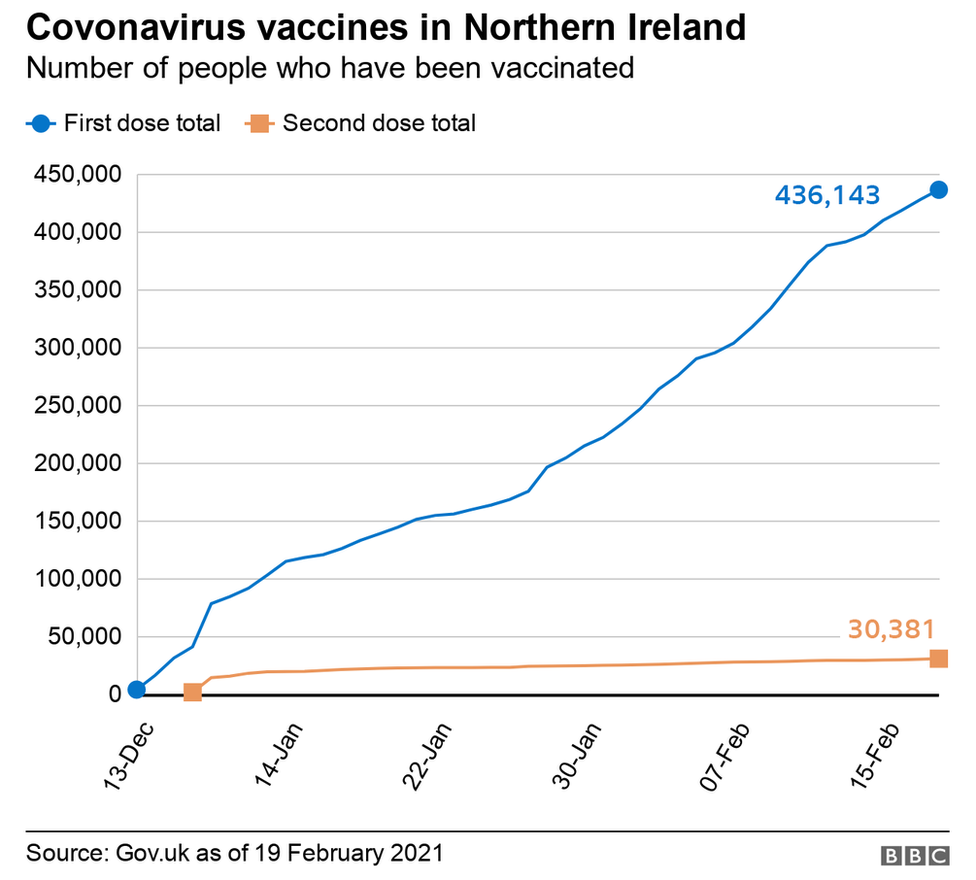
Of these, just over 30,000 have had their second dose.
That figure of 436,143 means that about 23.3% of Northern Ireland's entire population has been vaccinated.
Compared to Great Britain, Northern Ireland is slightly behind the other nations of the UK: Wales (26.8%); Scotland (25.7%); and England (25.4%).
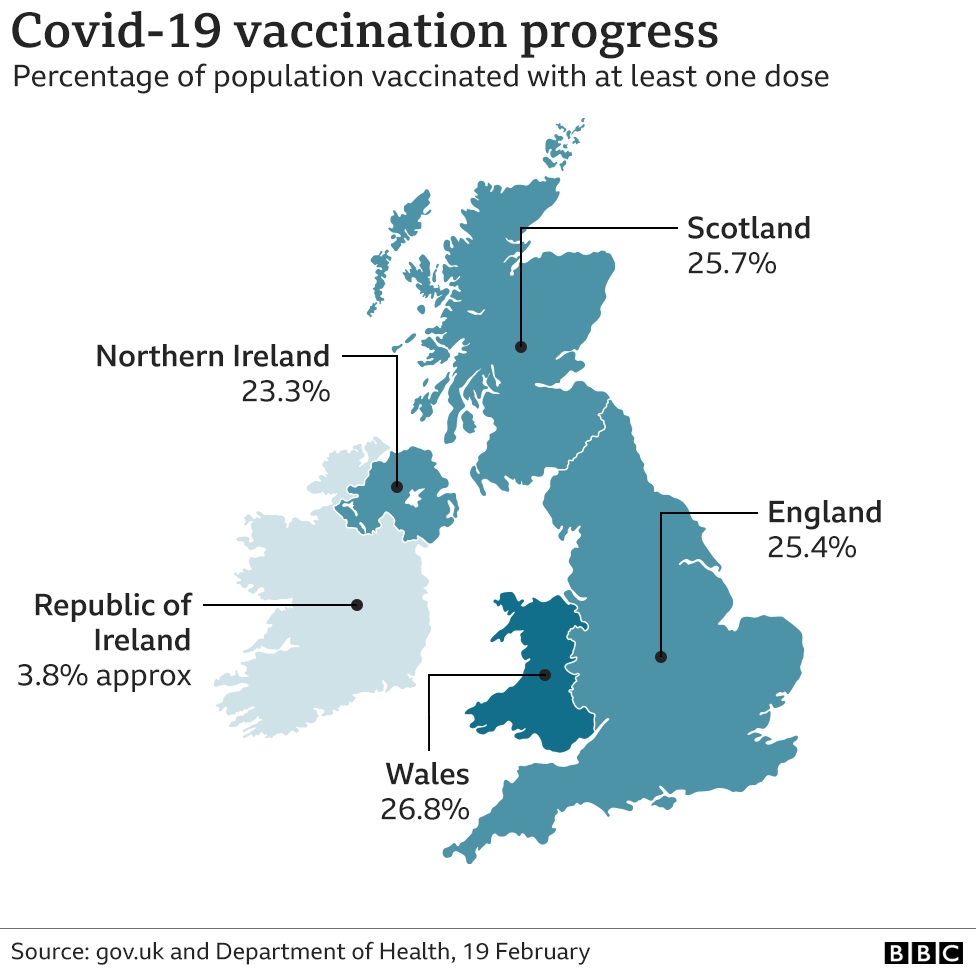
The Republic of Ireland has now vaccinated about 3.8% of its population.
However, it should be remembered that a different strategy has been adopted there - first doses have not been prioritised to the same degree and more than half of those vaccinated in the Republic have had their second dose.
On Friday, Northern Ireland's health minister announced that all carers over the age of 18 can now book a Covid-19 vaccine.
Previously only carers over 50 were eligible, but Mr Swann said he had decided to remove the age criteria and "open this up to all carers" - it will be interesting to see if this affects vaccination figures this time next week.
Related topics
- Published13 February 2021
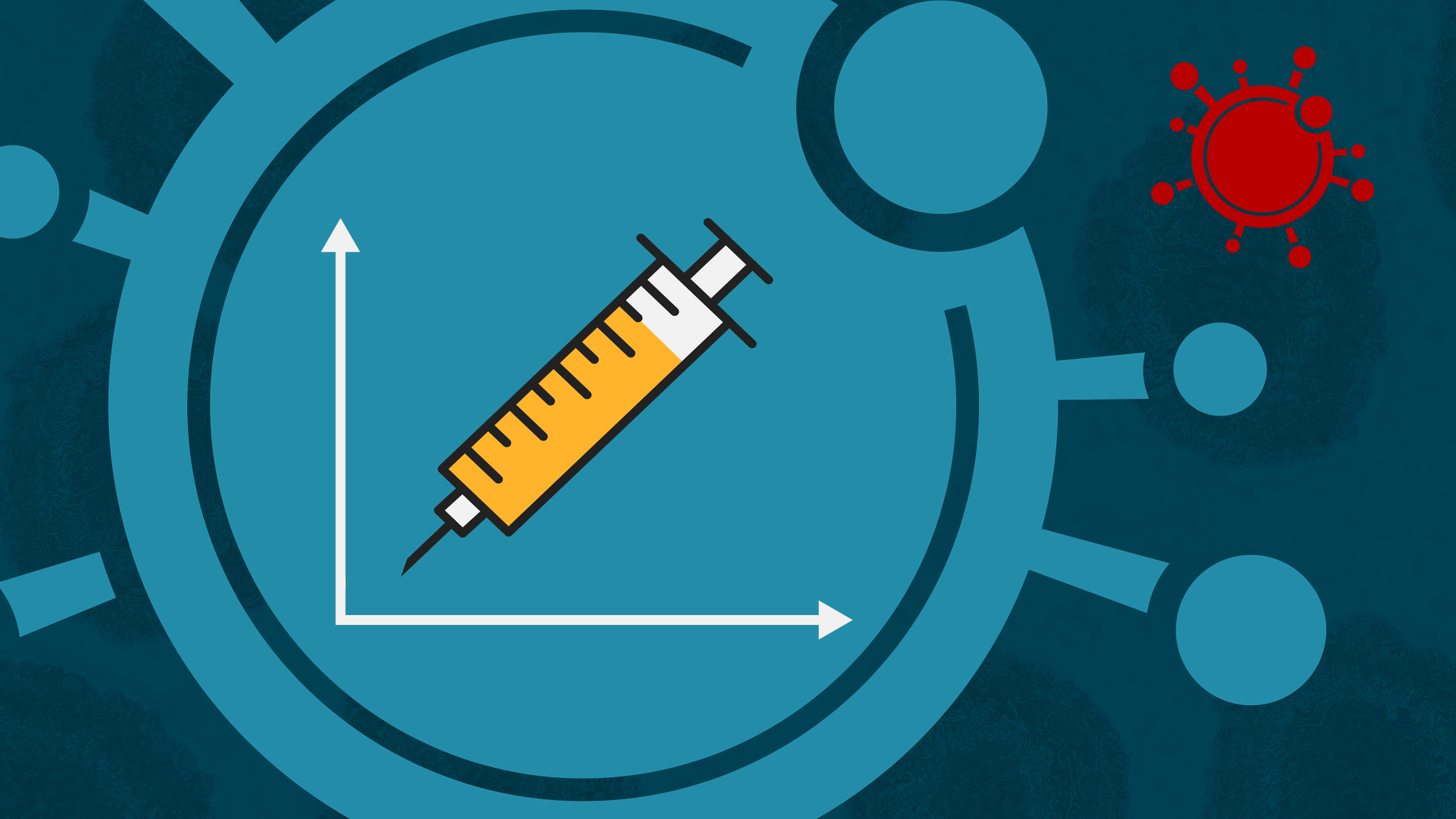
- Published26 March 2021

- Published23 January 2021
